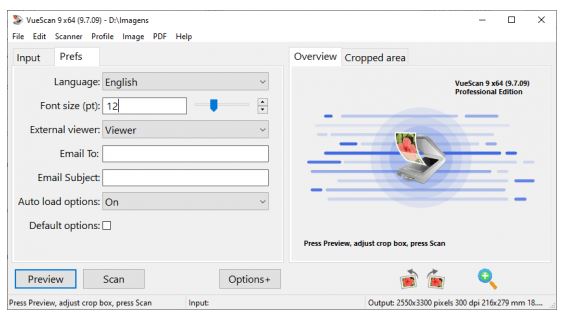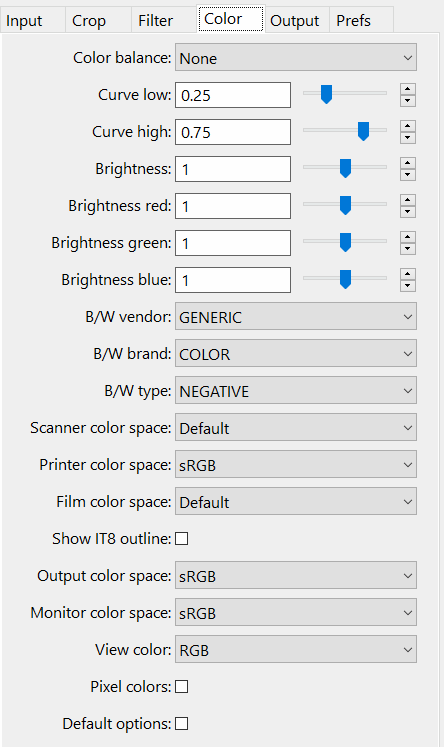- Vuescan Scan Multiple Negatives
- Vuescan Scan Multiple Photos Mac
- Vuescan Scan Multiple Slides
- Vuescan Scan+
- Press the Scan+ button to scan additional pages. They will append to the document you just scanned. Press the View button to view the document you just scanned.
- VueScan Pro 9.5.07 (x86/x64) Multilanguage 17.3 MB نرم افزار VueScan ، محبوب ترین نرم افزار اسکنر دنیا با قابلیت های بسیار برای عکاسان، کاربران خانگی،.
Getting started with VueScan
VueScan is a powerful scanning tool that's aimed athelping you get the most out of your scanner and producingstunning results from your scanned photos.It's packed with loads of useful and powerful features and currently supportsmore than 4300 scanners from 35 scanner manufacturers on Windows, Mac OS X and Linux.

Open VueScan Insert document into the scanner feeder upside down and facing the back wall. Configure the following options in Vuescan’s Input tab (default folder.
The following tutorial is designed to familiarise you with the software and its userinterface, and to help you scan your first photos and slides.
You'll find useful hints and tips here on how to carry outcommon taskssuch as batch scanning and scanning to PDF files.
Getting to know VueScan
If you've used a scanner before, you've probably encountered somethingthat looks a little similar to VueScan. But it's still worth takinga little time to get used to where everything is before diving in.
- The most important area is the Preview panel. This is where your scanneddocument appears after it is scanned. You use this area to prepareyour images before scanning them at full resolution
- Settings are adjusted using the controls in the left hand panel. Thisis called the Options panel. It has tabs running along the top. Theseare used to change the type of settings being adjusted
- The action buttons are at the bottom of the window. Use these to scan,preview and carry out other essential tasks
- The menus at the top of the window can be used to access more advancedfunctions. These are described in more detail in appendix B
Basic Workflow
You can do most things in VueScan by simply pressing the Scan button.
You can also see more options using Input | Options and you can choose additional options before pressing the Preview button or Scan button.
The basic process for scanning one imagecan be summed up in three simple steps (for an explanation of themore advanced functions, see the appendices in this manual):
Load your image
- Place your photo face down inside the scanner or load your slide/negativeinto your slide scanner
- For photos, set Input | Media to 'Color'
- For slides or negatives, set Input | Media to 'Image','Color Negative' or 'B&W negative'
Preview and crop
- Click the Preview button. This produces a quick,low resolution snapshot for you to work on, before carrying out a fullresolution scan
- When the preview has finished your image will be displayed in the Preview panel
- Click and drag the mouse to draw a box around the image.This ensures the scanner does not waste time scanning blank areas
Scan and save
- Click the Scan button
- Wait for the scan to finish. This varies depending on your scanner, the speed of your computer and the resolution you are scanning at
- Once the scan is complete it is automatically named and saved in thelocation specified by Output | Default folder
Screenshot of Vuescan with a prescan of a slide in progress.
You can also watch a video version of this tutorial on YouTube.
I also have a video tutorial showing how to use RAW Files from Vuescan.
I use a Nikon LS-8000ED scanner with Vuescan software. The information that I give below should work perfectly for any Nikon Scanner, and should be pretty close with other film scanners. I use Vuescan, rather than Nikon's scanner software, because Nikon stopped supporting Nikon Scan years ago. It tends to be unstable on later versions of PowerPC OS-X and Windows, and may not work at all on the Intel Macs. My instructions below are for the Professional Version of Vuescan, using the advanced control set. Vuescan's Mac and Windows versions are identical, so these settings work on either OS.

Vuescan is a very powerful program with a lot of settings. The controls are divided into several tabs. These are the settings that I use for scanning color slides and transparencies.
Explaining the settings:

Why I use the settings that I use.
Input Tab
-Media This tells Vuescan what type of film you're scanning. For color slides and transparencies, there are actually two choices that will work. You can choose IMAGE or SLIDE FILM.
Vuescan's instructions say that if you choose IMAGE, it will try to make the scan look as close as it can to the colors in the slide; and if you choose SLIDE FILM, it will try to make the scan look more like the actual colors in the scene. I have no idea how the software would know what the actual scene looked like, but that's what the Vuescan Users Guide says.
In actual practice, I can see no difference between the two settings. In earlier versions of Vuescan, I did get different results, and for some images I liked the scans using the IMAGE setting, and for some I preferred the SLIDE FILM setting. In the current version, I see no difference.
I used IMAGE for this tutorial.
-Batch Scanning: This allows scanning more than one image at a time. See my Vuescan Batch Scanning Tutorial for directions.
-Preview resolution: Set this to 677 DPI. The software makes the preview large enough to see on your screen. It doesn't need to be high resolution, so scanning for screen resolution makes the preview scan faster. The Prescan is just needed so you can set the cropping of the scan.
-Scan Resolution: Whatever your scanner's highest is. My Nikon does 4000dpi. Don't scan lower thinking you'll make smaller prints. You'll regret this deeply when you decide to make a larger print and have to rescan and redo ALL your post-processing, dodging and burning, retouching, etc.
-Auto Focus: Always (if you scanner offers this...flatbeds don't usually). On the Nikon scanners, you can choose a pont on the image for the autofocus mechanism to lock on to. This should be a detailed area, not a flat tone. If you use autofocus only on the prescan, it may focus on an area without much texture and reduce image sharpness in the final scan.
-Fine Mode: If you use a Nikon scanner use this. Some Nikon scanners, such as the LS-8000ED, have a bug that produces banding in the final scan. Fine mode increases scan time a bit, but eliminates the banding. I don't think this is needed for the last generation Nikon scanners, like the 9000ED and 5000ED.
-Multisampling: This improves dark tone noise in dense slides. It also increases scan times. I don't use it for photos that are mostly light or middle tones, but ones with lots of dark tones, or that are underexposed, can benefit from it. Try 2 or 4 times multisampling as a starting point. Note that 2x sampling doubles scan times and 4x quadruples them.
Filter Tab
-Infrared Clean: Infrared cleaning removes dust and scratches. You should try to keep your slides scratch-free and you should clean them as well as you can before scanning, but this does work well for those with scratches or embedded dust.
I use the LIGHT setting most of the time. The high settings reduce fine detail resolution, especially the HEAVY setting. The tradeoff is worth it to save a very badly damaged film. The LIGHT setting does not impact image quality.
The Infrared Clean does NOT work with Kodachrome film, and should be turned off when scanning Kodachrome. It works fine for any E-6 films.
-Restore Colors/Restore Fading: These are for old faded films. RESTORE FADING fixes loss of contrast and RESTORE COLORS fixes color shifts that happen when color films fade.

-Grain Reduction: I don't use this, it reduces fine image resolution. Film has grain, that is the nature of the medium. Don't like it? Shoot digital.
-Sharpening: I don't use the sharpening built into Vuescan. Sharpen in your image editor (photoshop, lightroom, etc.). The sharpening tools in most editing software is a lot better than what's built into Vuescan.
Color Tab
Vuescan Scan Multiple Negatives
-Color Balance: For most things, I use the NEUTRAL setting. You can try the others and see you like one of them better.
-White and Black Points: Set white point and black point both at 0% to avoid clipping of highlights and shadows.
-Leave Curves and Brightness settings at default
-Output Colorspace: For color scanning, you have a choice of output colorspaces, like sRGB and Adobe RGB(1998). The color gamut of color film is much wider than the sRGB colorspace. I use Adobe RGB(1998).
-Film Type: This option only shows if you set the Media Type to Slide Film. The choices are Generic Slide Film, Ektachrome, and Kodachrome. Choose Kodachrome for that film. For other films, try Generic Slide Film or Ektachrome and see which works best for your film.
Output Tab
-Printed size: Scan Size, 100%. You'll get a file the size of the negative (about 1x1.5 inch for a 35mm neg) at whatever resolution you scanned at.
-File Type: TIFF.
-Tiff compression: None. TIFF Compression is lossless, meaning quality is not reduced, unlike JPEG, which does lose data to reduce size. However, TIFF Compression does not save much file size and makes the file open and save slower.
-Tiff File Type: 48 bit RGB.
The Final Scan:
As you can see in the screenshot above, the final scan is a little flat looking, and the color balance is a little too cool. Lets open it in Photoshop and fix that.
By applying some curves adjustments we can increase the contrast and fix the color balance. I have a Curves Tutorial if you need help with this powerful image editing tool.
After color and contrast correction. A beautiful photo!
Vuescan Scan Multiple Photos Mac
If you have read my Black & White Scanning Tutorial, you'll notice that the slide film scan required much less adjustment in the final editing than negative scans do. This is because film scanners are made for the wide density range of a color transparency. Negatives, BW or Color, have a lower density range, and are lower in contrast than transparencies are. This makes them scan in looking very flat
Vuescan Scan Multiple Slides
The knowledge that I am sharing took many years of study and practice to attain. If you find it valuable, please donate through my Paypal button below. My creative work is how I support myself and my son. Thank you!
©2021 Christopher Crawford
Vuescan Scan+
260-437-8990
